Tallinn is a great city to visit for a short break or as a gateway to Estonia. Less than three hours flying time from the UK, Tallinn can be a historical gem and an example of a dynamic city that’s pushing forward with innovation and re-invention. The cuisine is fantastic with plenty of restaurants featured in the Michelin Guide. In this blog, I’ll focus on dining and places to explore.
I was travelling with a small group of travel specialists and we were guests of Visit Estonia who represent tourism and commerce for Estonia. Our trip started with lunch at Restaurant Pegasus which is not far from the Old Town and offers a reasonably priced menu. I am trying to cut down on meat consumption but a bit tentative about going for a Veggie or Vegan options when I’m out and about. However, I opted for Roasted Cauliflower which looked and tasted wonderful. This dish is seasonal and comes with almonds, chillies and tiny shimeji mushrooms. There are also plenty of meat options and caters to modern palates. The restaurant opened in 1962 when Estonia was part of the Soviet Union but feels very 21st Century.
The group spent the afternoon exploring the limestone buildings of the Medieval old town and we learned how Tallinn has been conquered by the Danes, Swedes, Germans and Russians over the last 800 years. The old town has some stunning architecture and great views across the Baltic. Our guide explained that the Sokos Hotel that faces the main gate of the old town was bugged by the KGB during the Cold War. The higher the floor that a guest stayed on, indicated their value to the KGB. Lower floor guests were of less importance. The guide told us that only the elite were allowed to travel around the USSR and for that reason the KGB kept tabs on them. Happily this predates the Sokos name and anyone can go to sleep in Tallinn without fear of waking up in Siberia.
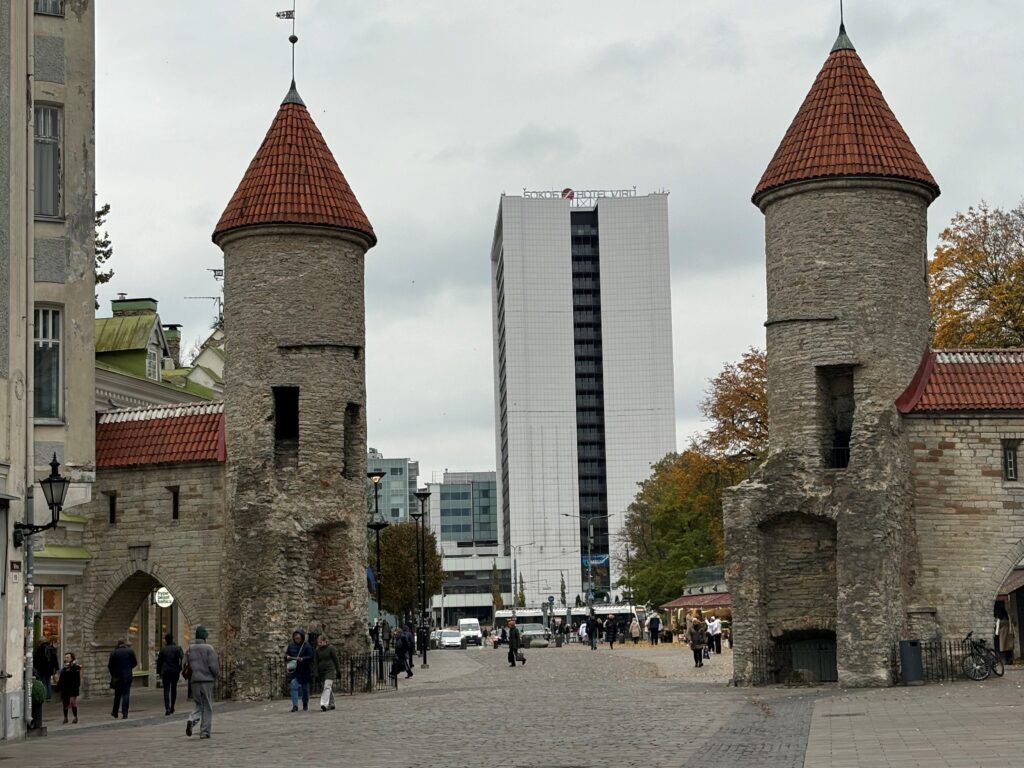
In the evening , our group visited the Rotermann district which was a short walk from our hotel, The Nordic Hotel Forum. This area was formerly an industrial area of limestone warehouses but has been regenerated to preserve identity and sense of place. Our restaurant for the evening was Restaurant Pull which has been featured as ‘Michelin Recommended’ for the past three years. The food was excellent as was the local bottled beer. I mentioned earlier that I was trying to cut down on meat but at Pull I went for the Burger which was delicious and high -quality comfort food.
We took a break from Tallinn to visit Vergi Harbour and visited Restaurant Wirkes. This area is a beautiful stretch of Baltic Coastline and only an hour or so from Tallinn. Highly recommended for fly-drive holiday makers. The restaurant is located on a harbour quay and has a nice laid back vibe. The kitchen produce their menu from seasonal produce and options shifts accordingly. Their dining plates are unique and produced by the owner who is a visionary.

On the final full day of our trip, we returned to Tallinn to visit Baalti Jaama Market, near the railway station. This area is called Telliskivi and surrounds the station. It attracts artists and start-up businesses that work out of converted sidings and rail sheds. The Market is under cover and offers local produce, street food and vintage clothing.
For lunch we stopped at the nearby KoHo restaurant which is described as being in the ‘Hipster’ district. I didn’t see any luxuriant beards or plaid shirts, but the atmosphere was modern with chic décor and funky grooves playing over the speakers. The menu caters to all tastes and dietary requirements. Another place to consider on your visit to Tallinn!
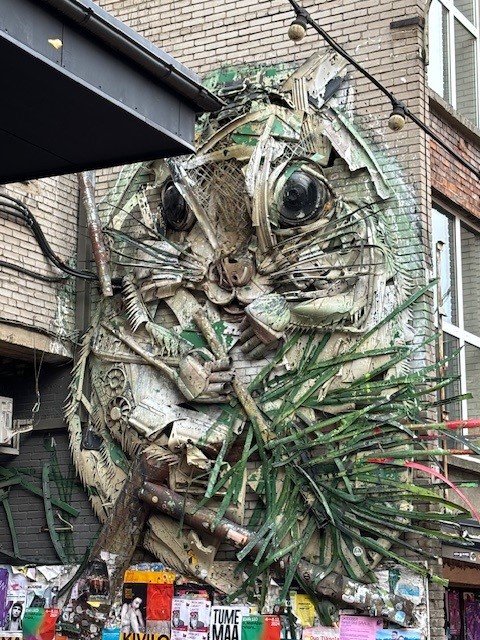
During the afternoon we visited the Seaplane Museum near the old wharf area which is fascinating. Within the building there is a WWI Submarine that is suspended from the roof. It was built in Barrow, Cumbria and was cutting edge technology at the time. I can’t say that I’d fancy being a submariner. Too claustrophobic and it must have got a bit stuffy and tense in there. The Museum covers Estonian maritime history and also houses boats and other water craft. There is a replica of a Seaplane hanging from the ceiling. None of the original aircraft exist as some of the materials were highly combustible. The Museum Building is the largest concrete building in the Baltic region and was rescued from ruin by EU funding. It looks like a villain’s lair from James Bond or Austin Powers and worth an hour or two of your time.
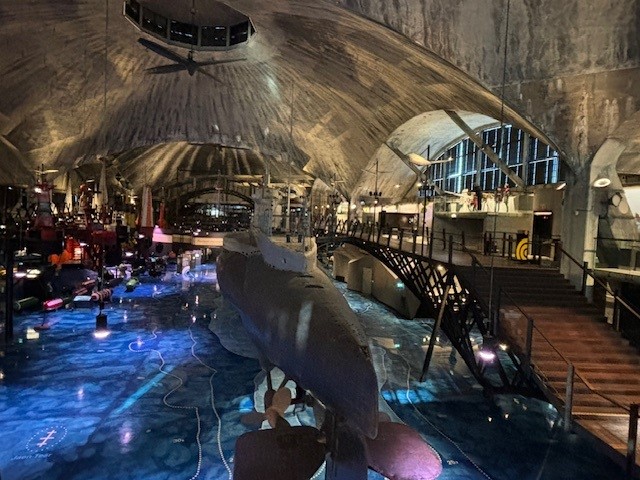
Two more places to recommend – The Pohjala Brewery which is a walk from the Seaplane Museum. We had a tour of the brewery and got to sample a few of their ales. My favourite was a Pilsner that’s easy going and not too punchy. There’s also a restaurant and some cool music. I discovered Soviet era Estonian Funk playing over the PA and is my new favourite thing!
Our last meal was at Mon Repos which is on the edge of the city centre and near the KuMu Gallery. We ate at the Chefs Floor which is a fish restaurant. The setting is opulent but the menu prices were affordable. The restaurant had a relaxed ambience and the staff were knowledgeable about food and wine choices. I had the Sea Bream which was perfect.
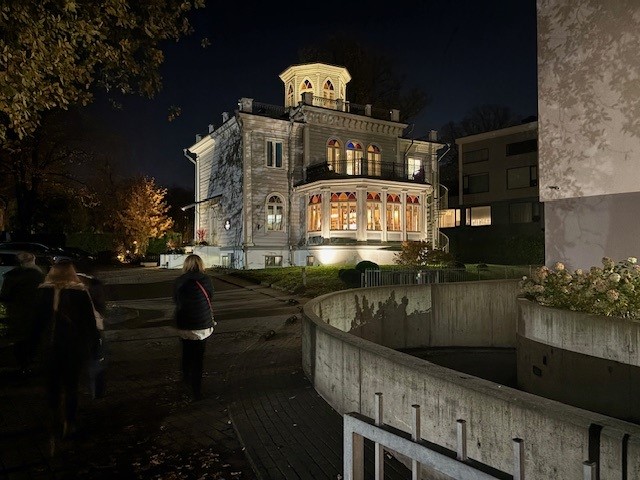
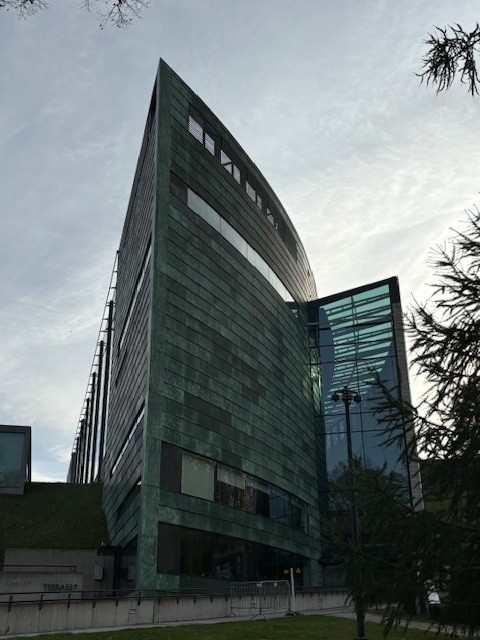
I also recommend visiting the KuMU (Art Museum). The art within is stunning and you can see the different influences of the 20th Century throughout the gallery. Entrance is currently €14 but you can get in on the Tallinn Card which can be bought online.
When visiting Tallinn there are plenty of options for dining out and I would recommend against paying for half board at your hotel. It’s also easy to find an alternative to the international food chains and have great food without a hefty price.
There’s more to Tallinn than the Medieval old town and it’s worth checking out the start-ups and newer cultural gems to get the full experience.
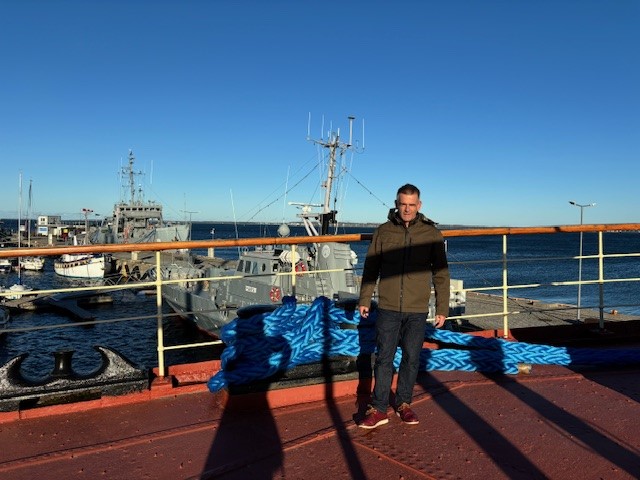
by Mark Champagne
Baltic Travel Company (all rights reserved)